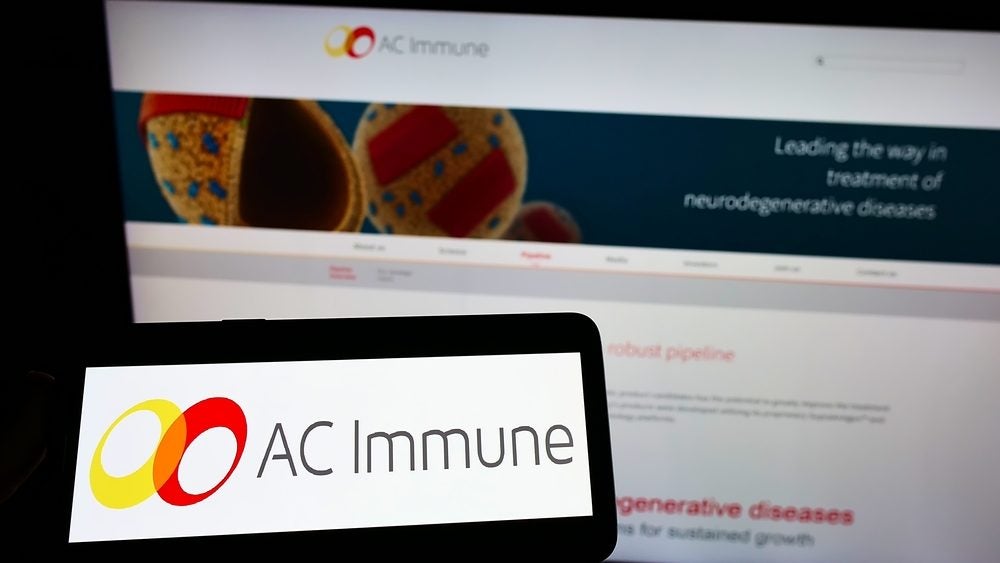The UK’s Accelerated Access Review was finally published last month. Its remit was always going to be a difficult one, considering the timing. The idea behind the review was conceived back in 2014, to fulfil a major manifesto pledge of the previous UK coalition government “to increase the use of innovative new medicines for National Health Service (NHS) patients”. An independent review body was set up, chaired by Sir Hugh Taylor and supported by the Wellcome Trust, with the ambitious remit of setting out specific pathways to “accelerate access for NHS patients to innovative medicines, medical technologies, diagnostics and digital products, making our country the best place in the world to design, develop and deploy these innovations.”
After a favourable response to an interim version in October 2015, and an adjustment of final themes and directions, a spring 2016 deadline was set for publication. However, at this point it became clear that the final publication timing might be less than optimal. Apart from a growing financial crisis in the NHS, making “cost-effective” treatments rather higher on the agenda than “cutting-edge” in terms of patient access, the ultimate wildcard of the UK Brexit referendum in June approached, and unsurprisingly, the report was postponed until 24 October 2016.
Interestingly, the report does not shy away from both the cash-strapped NHS and Brexit-related uncertainties, but notes that the very innovations it recommends have been designed precisely to streamline processes and thus create more value for money within the NHS, and to cement Britain’s position as a country “remaining open for business”, optimising its attractiveness to foreign markets following the break for independence.
The report incorporates consultations with around 600 people in all, drawn from the NHS, patient and clinician groups, the pharma industry and academia. It is clear from the outset that this project is no blue-skies limitless-budget programme, or a mere setting out of visions. Practicality is a major distinguishing feature. Indeed, the primary purpose is set out in the opener as “How best to access innovation for the benefit of patients and to improve healthcare efficiency.” But can both of these truly be achieved at the same time?
The 18 recommendations in the full report cover the entire gamut of pharmaceutical development, from early research, preclinical and clinical trials through regulatory approval and launch to cost-effectiveness appraisals, pricing and routine commissioning, all geared to enabling UK NHS patients in most need to receive the most innovative products as quickly as possible. The emphases are on stimulation of creative research and development, “horizon scanning” to pick up important early pipeline developments, rapid and efficient evaluation in the laboratory and clinic, streamlining of regulatory measures without sacrificing safety or quality, ditching outdated procedures, and facilitating joined-up thinking between all parties, to ensure that patients in need receive effective new treatments quickly, and developers reap the benefits of their inventions. In particular, it proposes a new partnership between UK healthcare bodies to streamline processes and bring forward patient access to new drugs by up to four years, along with more flexibility in UK drug pricing, and creation of a new NHS strategic commercial unit. The Accelerated Access Review document is available in full.
The Accelerated Access Pathway – a true fast track for innovation, built on existing mechanisms
How well do you really know your competitors?
Access the most comprehensive Company Profiles on the market, powered by GlobalData. Save hours of research. Gain competitive edge.

Thank you!
Your download email will arrive shortly
Not ready to buy yet? Download a free sample
We are confident about the unique quality of our Company Profiles. However, we want you to make the most beneficial decision for your business, so we offer a free sample that you can download by submitting the below form
By GlobalDataThe report cites a scenario (the “Accelerated Access Pathway”) where the cycle from identification of a strategically important drug candidate through to access by patients most in need may be slashed by up to four years. Rather than setting this as a blank target, the report discusses exactly how this could be achieved, not by any radical reinvention, but simply by optimal performance of existing schemes. This would be theoretically feasible if the treatment is eligible for the early access to medicines scheme (EAMS) (saving 12-18 months), there is no delay at the NICE cost-effectiveness appraisal stage (around two years), or during the process for NHS commissioning and adoption (which takes two years or more). Streamlining could be achieved via shortened clinical development, concurrent regulatory and HTA processes (for instance via managed access schemes), pre-approval reimbursement with flexible pricing and a conditional entry period, and incentives for adoption, support and uptake of the new treatment at the commissioning stage.
As examples, the report cites lessons learned in the rapid response to the Ebola virus outbreak, and strategies for overcoming regulatory challenges in the treatment of dementia. The Accelerated Access Pathway is intended to fit seamlessly with existing early access and breakthrough medicine schemes for pharmaceutical products, with time taken out of the process by better alignment of regulation and cost-effectiveness evaluation, and seamless and timely communication between the teams involved in each process.
How can NICE be made nicer?
When a report begins a section with “This review is extremely supportive of NICE as a global leader in health economic evaluation and evidence-based guidance”, one feels instinctively that a “However…” is about to follow – as indeed it does, raising the important subject of reform of the UK’s health technology assessment (HTA) procedures, and stressing the need for NICE to evolve and adapt its methods and appraisal processes to ensure that they are “fit for purpose.” Changes to NICE methodologies recommended in the report include:
- The ability to make a “conditional” recommendation, where the evidence base is immature, and inform NHS England’s commercial discussions, which ideally would conclude before NICE guidance is issued.
- A thorough review of evaluation methodology and processes to ensure that they are “fit for the future.”
- The possibility of recovering the costs of its assessments. This is controversial, and when this aspect was leaked before the publication of the report, it was criticised by pharma industry representatives as unsustainable, citing difficulties for smaller pharma companies and challenges for the industry in accessing the UK market, particularly for rare indications (IHS Markit Clients can read a special report: UK NICE proposes GBP282,000 flat fee to assess new drugs – report). However, details are not elaborated, and clearly such a scheme would require much consultation with the industry regarding what would be acceptable.
- A “lighter-touch” accelerated process for some breakthrough products, and accelerated processes generally in all areas.
- A new flexible HTA pathway, tailored to each value proposition.
- A greater focus on “value exchange”, including disinvestments.
- Support of accountability and transparency in uptake of innovative therapies, for example through an adapted version of the existing Innovation Scorecard, which already operates but has been under-used.
That said, the NICE team has clearly been recognising the need for process adaptation (perhaps anticipating this report?), and has already made proposals for a fast-tracking scheme (IHS Markit Clients can read more: NICE proposes fast-tracking for most cost-effective treatments and new budget impact threshold). In the NICE proposal, promising medicines with clear evidence of efficacy and a low incremental cost-effectiveness ratio (under GBP10,000 (USD12,200) per quality-adjusted life year (QALY), forming around 15% of current NICE applications, will be eligible for fast-tracking via a “lighter-touch” appraisal route. Time savings would be achieved by omission of a second appraisal committee meeting, omitting any consultation on draft recommendations, and avoiding the need for attendance of external consultants (since the case for approval would already be clear and convincing). The new NICE fast-track scheme is under discussion, to be finalised on 13 January 2016.
The Accelerated Access Partnership – a ‘light-touch umbrella’
The report proposes the immediate formation of a new Accelerated Access Partnership (AAP), including representatives from NHS England, NHS Improvement, NICE, and the national Medicine and Healthcare Products Regulatory Agency (MHRA). The AAP is given the remit of being a “light-touch umbrella organisation”, with responsibilities including horizon scanning for strategically important products, assigning transformative designations, and clarifying priorities to innovators, to pass on an improved investment focus. The AAP would also oversee the Accelerated Access Pathway, assist innovators during the process, provide guidance to market, and facilitate affordable commercial arrangements.
This partnership is considered key to ensuring that the proposed Accelerated Access Pathway does not fail by fragmentation or rate-limiting barriers. Having representatives from all stages in the development process should avoid misunderstandings and omissions. The report recommends that the AAP is set up immediately, so that the collective leadership can be effective in 2016-17, and that the AAP takes the lead in implementing the recommendations of the AAR. Setting champions for the scheme will be crucial.
Destination uncertain – spring into action or languish on the shelf?
The long-awaited publication of this report received universally positive responses from the pharma industry and public healthcare sectors, patient groups and, importantly, a welcome from the government, albeit a cautious one. In a published comment from Lord Prior, Parliamentary Under-Secretary of State for Health, the report “provides us with a strong basis to make the right decisions about how the health system can be adapted to meet the challenges of the future, attract inward investment, grow the thriving life science industry and use innovation to improve patient outcomes.” But tellingly, he touches on the issue of stretched NHS resources in noting that patients should be able to access these new innovations “in a way that is affordable and sustainable”. Nonetheless, he makes it clear that the intended spirit of the report has been picked up, and that the AAR should be seen as “part of the solution to that efficiency challenge, rather than adding to it.”
From the pharma industry’s standpoint, the CEO of the Association of the British Pharmaceutical Industry (ABPI) gave a predictably positive endorsement to the report, regarding it as an important foundation for building a Life Sciences Industrial Strategy with the government, and welcoming the opportunity to encourage closer collaborations between innovators, manufacturers, regulatory bodies, patient groups and the NHS. As in the report itself, he sees acceleration of breakthrough medicine development as being a key step in the direction of major “growth in research and development, manufacturing and employment in a post-Brexit UK”. However, the onus is now on the government to respond and produce a clear implementation plan.
In the meantime, the government has stated that it will consider the proposals in the report and “respond more fully in due course, mindful of the need to ensure affordability”. In a note from the report’s chair, Sir Hugh Taylor, he acknowledges that “Some of the AAR’s recommendations are far-reaching, and it is right that the government takes time to consider how it can best deliver them.”
So what now? Other recommendations for reform in this area have come and gone (for example, value-based pricing), but perhaps the sheer practical detail in this document makes it belong more to the “ignore at your peril” category, even in this slightly chaotic peri-Brexit period. A government response is the first thing required, and it is impossible to guess the impact of this scheme until the extent of practical government support is known. And after this, the whole scheme needs a prolonged and determined push if it is to be implemented throughout the entire entrepreneurial, clinical, regulatory, NICE and NHS cycle.
Bearing in mind that true breakthrough medicines form only a tiny fraction of the pharma industry’s success and effective treatment of patients, we must also remember that any streamlining of processes and improved communication between industrial, regulatory and clinical bodies can only have a positive effect on patient care in the end. In fact, part of the reason this report has been remarkably well received by all parties is that representatives of these very parties have already been consulted on what they would like to see, and changes they would like to see made, plus nuggets of experience on what does and does not work in practice. And best of all, it seems to have achieved that tricky goal of facilitating radical change by disguising it to resemble a set of familiar and well-worn processes.










Related Company Profiles
Association of the British Pharmaceutical Industry
NHS England
National Health Service
IHS Markit Ltd
NHS Improvement